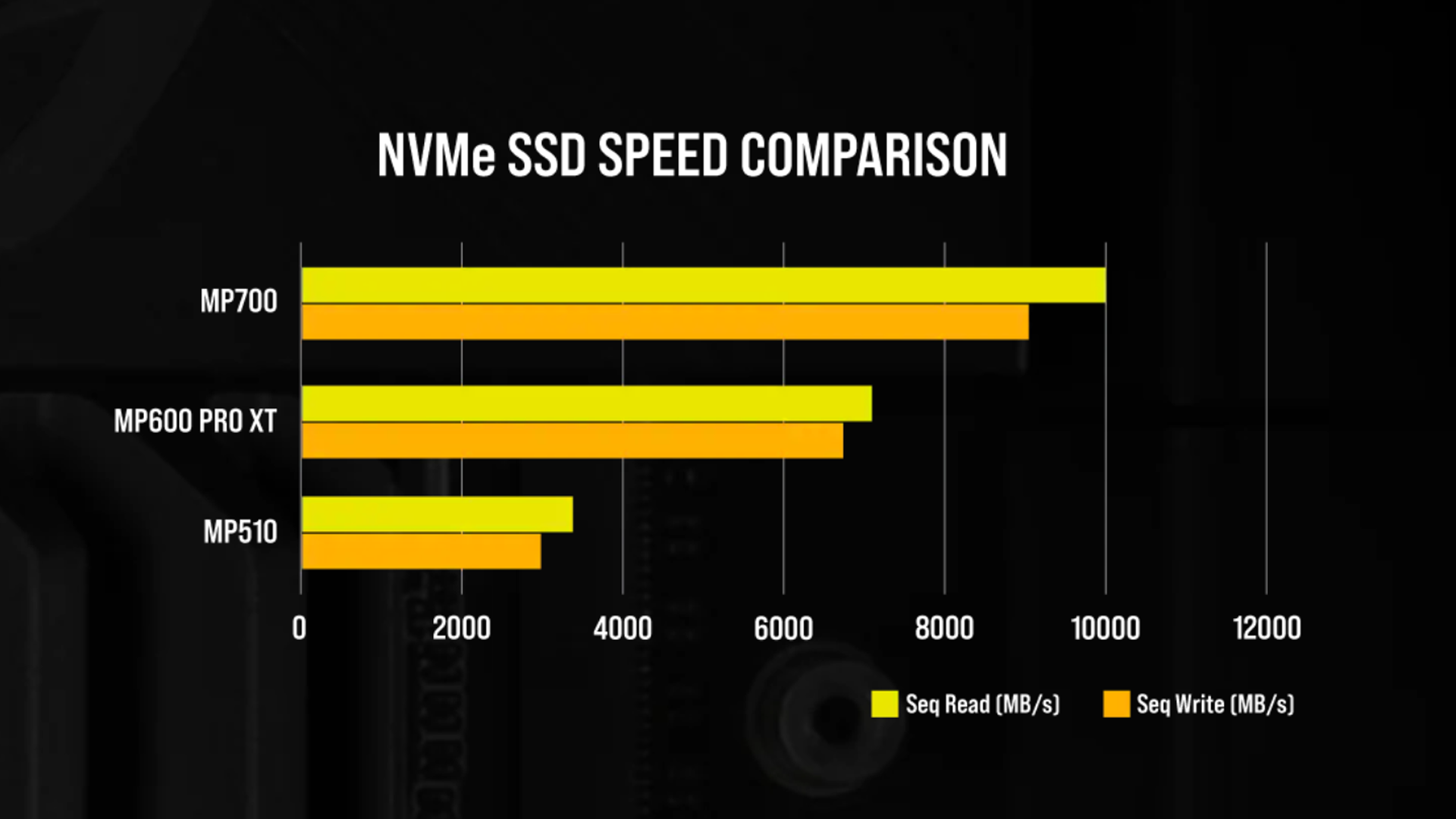Corsair Teases First PCIe 5.0 SSD With 10,000MB/s of Bandwidth
Corsair is teasing performance metrics of its first PCIe 5.0 SSD, the Corsair MP700. The Corsair MP700 Gen 5 PCIe x4 NVMe 2.0 M.2 SSD features impressive 10,000 MB/s sequential read speeds and 9,500 MB/s sequential write speeds. The company touts the drive as ready for AM5, but that doesn't stop Intel Alder Lake (and upcoming Raptor Lake) users from benefitting as well.
The MP700 is 40% faster than Corsair's fastest PCIe Gen 4 drive, the MP600 Pro XT, in both sequential read and write speeds. This can be attributed to PCIe 5.0's higher bandwidth — in the M.2 form factor, PCIe 5.0 allows for a maximum of 15.8 GB/s.

The MP700 basically confirms we're likely to see PCIe 5.0 drives in consumers' hands this year — from not only Corsair, but other drive manufacturers as well. While Intel was ready for PCIe 5.0 last year with Alder Lake, manufacturers simply weren't ready to launch PCIe 5.0 drives when Alder Lake was released.
PCIe 5.0 SSDs were originally expected to hit only the enterprise market in 2022 — but, thanks to Silicon Motion's new enthusiast-grade SM2508 controller, PCIe 5.0 SSDs looked ready to make a "limited" appearance in the consumer enthusiast space. (And Corsair's teaser confirms this — the MP700 will likely be a higher-end "enthusiast" grade SSD.)
With the upcoming launch of AM5, as well as Intel's new Raptor Lake CPUs and 700 series chipset motherboards, it will be exciting to see PCIe 5.0 drives in the wild now that the technology is going mainstream.
At the moment this is just a teaser from Corsair — there's no release date or full specs shared on the site. But with the drive's advertised association with AMD's upcoming AM5 platform, we suspect it will launch around the same time as AM5 — in September, or by the end of the year.
Get Tom's Hardware's best news and in-depth reviews, straight to your inbox.

Aaron Klotz is a contributing writer for Tom’s Hardware, covering news related to computer hardware such as CPUs, and graphics cards.
-
kiniku Mostly marketing hype, sequential performance means next to nothing in terms of user experience.Reply -
hotaru251 again pointlss for 99% of ppl.Reply
nothing will even use that much speed.
ur talking barely, if at all, noticeable speed increase. (likely only if ur running 2 systems side by side) -
escksu No doubt the speed is real but nobody will be able to achieve this speed under normal circumstances.Reply
1. You need to read a very big file (eg 100-200GB in size) to be able to hit this speed. Thats assuming you have enough RAM so the whole file can be stored in RAM with no swapping needed.
2. If you are transferring this file to another drive, the destination will have to be the same speed too. You won't because all end-user boards will have only 1 x PCIE 5.0 nvme slot (the rest will be PCIE 4.0). Of course, you can purchase PCIE 5.0 cards to house multiple nvme drives but thats another story.
3. 10GB/s write speed is ONLY to SLC cache. Once SLC cache runs out, it will drop to usualy less than 1/2 the speed.